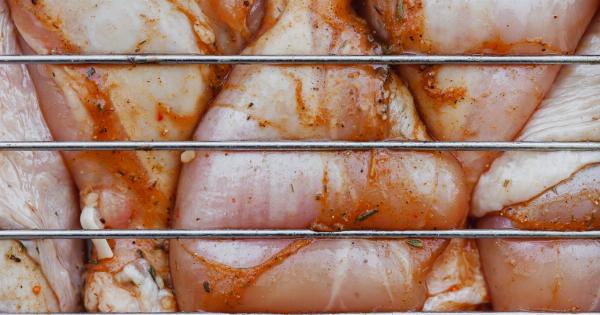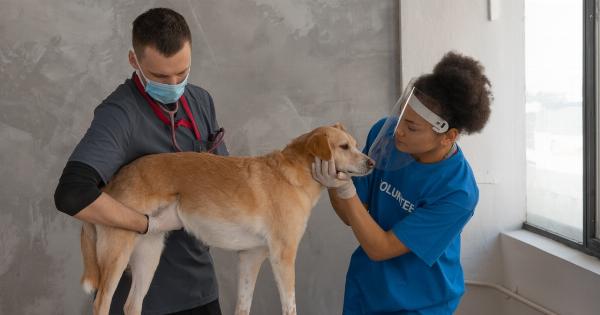Many pet owners are turning to bone broth as a nutritious supplement for their furry companions. Packed with essential nutrients and easy to make at home, bone broth offers a range of benefits for pets.
In this article, we will guide you through the process of preparing bone broth for your beloved pets, ensuring their health and well-being.
Why Bone Broth?
Bone broth is a powerful dietary addition that provides numerous benefits to both humans and pets. It is made by simmering animal bones for an extended period, which extracts essential minerals, amino acids, collagen, and other nutrients.
When consumed, bone broth can promote healthy digestion, improve joint health, boost the immune system, and enhance overall well-being.
What You Will Need
Before diving into the bone broth-making process, gather the following ingredients and supplies:.
1. Bones:
Choose high-quality bones from chicken, beef, turkey, or fish. Ensure that the bones are raw and free of seasoning or additives.
2. Water:
Use filtered water for optimal results.
3. Vegetables and Herbs:
Add flavor and additional nutrients to the broth with dog-friendly vegetables like carrots, sweet potatoes, and celery. You can also include herbs like parsley or turmeric for added health benefits.
Avoid using onion or garlic, as they can be toxic to pets.
4. Slow Cooker or Stockpot:
You will need a slow cooker or a stockpot for simmering the bones and other ingredients.
The Bone Broth Recipe
Now that you have gathered all the necessary ingredients and supplies, it’s time to start making bone broth for your pets. Follow these simple steps:.
Step 1: Preparing the Bones
If using raw bones, you can roast them in the oven for about 30 minutes at 350°F (175°C). Roasting the bones before simmering enhances the flavor of the broth.
Step 2: Simmering
In your slow cooker or stockpot, add the bones and cover them with water. Add the dog-friendly vegetables and herbs of your choice. If using a slow cooker, set it to low heat and let it simmer for 24-48 hours.
If using a stockpot, bring the mixture to a boil, then reduce the heat to low and simmer for 8-10 hours.
Step 3: Straining
Once the broth has simmered for the desired duration, remove it from heat and let it cool. Next, strain the mixture to remove the solids, such as bones and vegetables. Use a fine-mesh strainer or cheesecloth for this purpose.
Step 4: Storing
After straining, store the bone broth in airtight containers. You can portion it into smaller containers or use ice cube trays for easy serving sizes. Refrigerate the broth for up to five days or freeze it for longer storage.
Feeding Bone Broth to Pets
Now that you have the homemade bone broth ready, you might wonder how to incorporate it into your pet’s diet. Here are a few simple ways to use bone broth for your furry friends:.
1. Standalone Broth
Serve bone broth as a standalone treat or snack for your pet. Allow it to cool to room temperature before offering it in a clean bowl or dish.
2. Mixing with Regular Food
Pour bone broth over your pet’s regular food to enhance the taste and provide added moisture. This can be especially beneficial for pets with poor appetite or those transitioning to a new diet.
3. Freezing as Treats
Pour bone broth into ice cube trays and freeze it. These frozen bone broth cubes can be served as a refreshing treat on hot days or given as a special reward.
Important Considerations
While bone broth offers numerous health benefits, it’s essential to keep a few things in mind:.
1. The Right Bones
Ensure that the bones you use are suitable for your pet. Small, soft bones or bones that splinter easily should be avoided, as they can pose a choking hazard or cause internal injuries.
2. Serving Size
Depending on your pet’s size, age, and overall health, the appropriate serving size of bone broth may vary. It’s recommended to consult with your veterinarian to determine the correct amount for your pet.
3. Storage and Shelf Life
Properly store bone broth in the refrigerator or freezer to maintain its freshness and quality. Check for any signs of spoilage before serving.
Conclusion
Bone broth is a fantastic nutritional supplement for pets, packed with essential nutrients and beneficial compounds.
By making bone broth at home, you have control over the ingredients and can tailor it to your pet’s preferences and specific dietary needs. Remember to consult with your veterinarian and consider your pet’s individual requirements for incorporating bone broth into their diet.
With proper preparation and moderation, bone broth can contribute to your pet’s overall health and well-being for years to come.






























